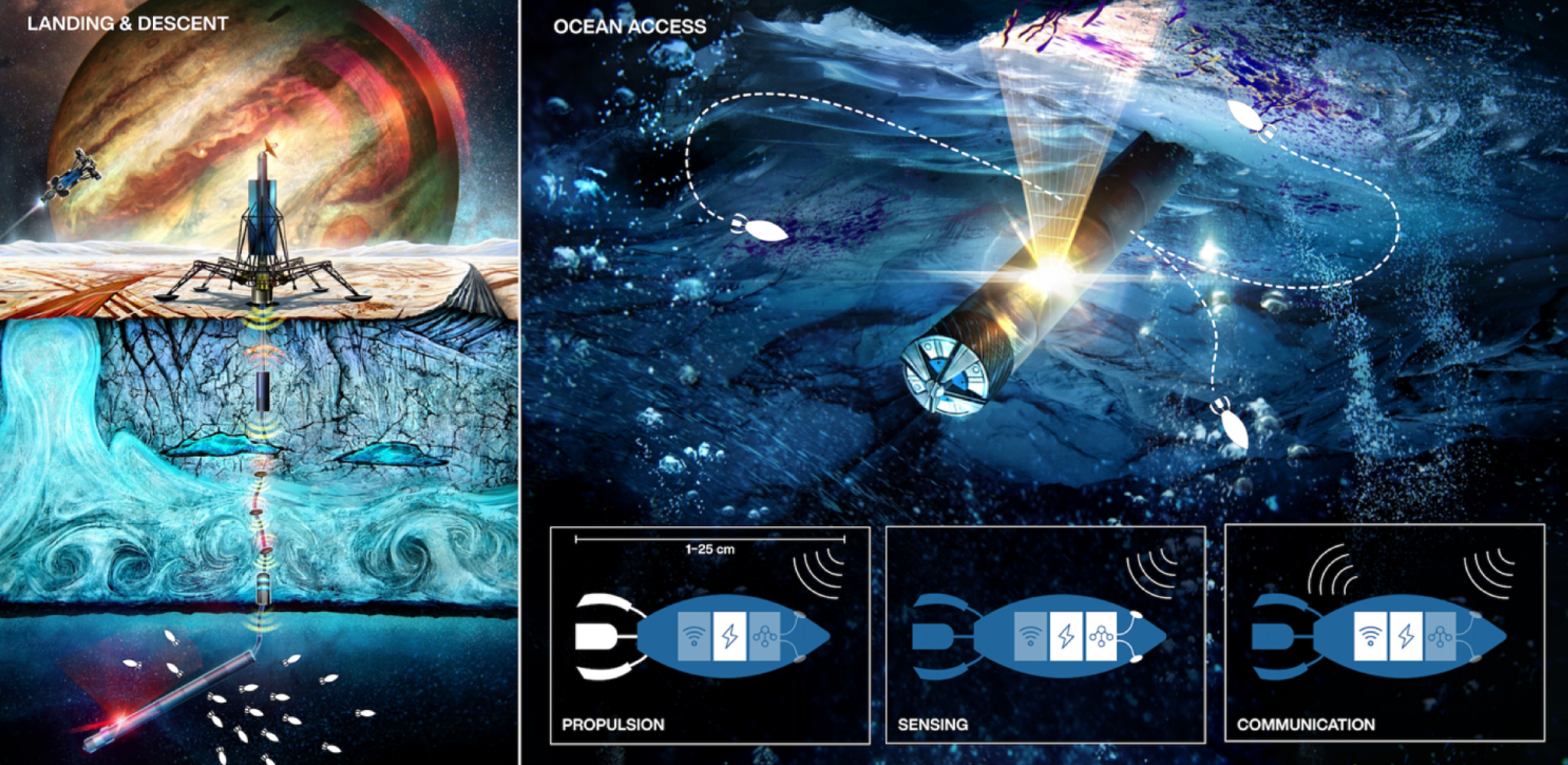Ethan Schaler
NASA Jet Propulsion Laboratory
The next decades of space exploration will focus on Ocean Worlds – especially Enceladus, Europa, and Titan – whose liquid oceans beneath kilometers of icy crust are some of the most likely locations beyond Earth to harbor life. To access these aquatic environments, NASA is developing and maturing numerous ocean-access mission concepts, including the Scientific Exploration Subsurface Access Mechanism for Europa (SESAME) class of thermo-mechanical drilling robots. We propose developing SWIM – Sensing with Independent Micro-swimmers – dramatically expand the capabilities of SESAME-class ocean-access robotic missions and significantly increase their likelihood of detecting evidence of habitability / biomarkers / life.
The SWIM system consists of cm-scale, 3D-printed swimming micro-robots (micro-swimmers) equipped with MEMS sensors, propelled by miniature actuators, and wirelessly controlled with ultrasound waves. The micro-swimmers are deployed individually or as a swarm from a single SESAME robot mothercraft, which has limited mobility once reaching / anchoring at the ocean-ice interface. SWIM enables active sampling of ocean water beyond the reach of the SESAME robot (increasing the chances of detecting biomarkers), as well as temporally- and spatially-distributed measurement of desired ocean properties, habitability metrics, and potential biomarkers (infeasible with a single robot). Together these capabilities will enable scientists to better characterize / understand the alien ocean’s composition and habitability on NASA’s first ocean-access mission.
In Phase 1, we will establish the fundamental feasibility of operating SWIM robots wirelessly at multi-meter distances from a robotic mothercraft through 2 Major Tasks:
- Build Science Traceability Matrix focused on focused on science goals for a NASA SESAME-class robotic mission at the ocean-ice interface.
- Perform Micro-Swimmer Design Trade Study to determine the appropriate robot designs / sizes to use available science instruments at the intended exploration ranges and under the expected sub-surface ocean conditions. It will focus on 4 key miniaturized subsystems: scientific instruments (MEMS sensors, spectrometers, cameras), actuators (ultrasound, piezo-electric, motors), communication (ultrasound), and power (batteries, energy harvesters).































